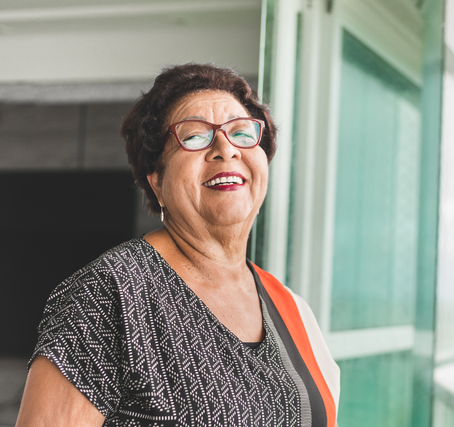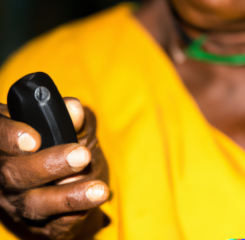Member Chat: Building Affordable Housing Without Government Subsidies
Garden Spot Village, a life plan community in New Holland, PA, expects to begin construction this spring on a 5-bedroom “cooperative living house” that will provide affordable housing and services to low-income older adults without using any government subsidies.
The home’s 5 residents will each have a private bedroom and bathroom, and will share the home’s common areas. Garden Spot Village will maintain the building and offer residents access to programs and amenities on its main campus, which is across the street. A social worker/case manager will connect residents with needed community-based services.
LeadingAge spoke about the project with Steve Lindsey, chief executive officer of Garden Spot Village. Here are some highlights of that conversation:
Why did Garden Spot Village decide to build a cooperative living house?
We wanted to serve people who can’t afford our traditional life plan community product. One of the things that inspired us was an article about a woman who lived in a stately home in a nice neighborhood outside Washington DC. She loved her house, she loved her neighborhood, but she found herself single and unable to afford either the upkeep or the taxes on the house.
Faced with having to move out, she put an ad in the local paper looking for boarders. Three or 4 other women moved in and pooled their financial resources. Even better, they lived in community with people who knew them, cared about them, and were engaged in their lives.
We looked at that model and wondered what it would look like if Garden Spot Village owned a home where people could live together as they age.
Why did you decide to forego government subsidies?
The go-to response for most of us is to look at government subsidized programs, like HUD programs or the tax credit programs. But when we dug into that, we decided that it didn’t make sense to rely on a government subsidy program if the government is going to struggle to keep up its current level of funding, and probably isn’t going to expand funding for low-income older adults.
So we decided to try and figure out a way to provide good, safe housing and services to lower income people with no government subsidies. That tends to be a little tougher nut to crack.
How were you able to build this home without subsidies?
We started out by doing some work around financial modeling. The typical standard sliding scale rent for government subsidized housing is 30% of income. So we asked ourselves, “What can we build for 30% of the income of the 5 people who will live here?”
We are a Mennonite retirement community and we have had some experience with an organization called Mennonite Disaster Services, which rebuilds homes around the country after natural disasters. Out of that experience, we learned the value of volunteer labor and how it can impact the total cost of a house. If we use volunteer labor and build the house at a low cost point, the pro forma shows that it will be a financially sustainable model.
Where will your volunteer labor come from?
We have 5 or 6 churches in the local community who said they would support this project with volunteer labor. Our local business association and our local social services network have also come alongside us as partners in the project.
This project has really been an unfolding of surprises. But the most pleasant surprise for us has been the overwhelming response and support from the larger community. This is not just a Garden Spot Village story anymore. It very quickly became the story of a community coming together to create a solution to a community challenge. It’s really taken off in an exciting way.
What will the house cost to build?
We anticipate the house would cost $525,000 if we had to hire a contractor to come in and build it. We’re hoping to pull that cost down to the $200,000 to $225,000 range with volunteer labor.
We have a low-key fundraising effort going on right now, and we anticipate that we will be able to raise at least half of what we need, if not more. Whatever contribution the house continues to need will be part of Garden Spot Village’s social accountability program.
Who will be eligible to move to the house?
We have modeled our program after the standards for government subsidized housing programs, so the maximum income would be 200% of poverty. But our target group is lower than that.
The typical applicant is like the woman who stopped by this week to drop off her application. She is spending 80% of her income on rent alone. The other 20% has to cover her insurance and her medications and her transportation costs and utilities and food and all the rest. She just can’t survive that way. That’s the group we’re after: folks who are running out of options and can’t get into other housing programs because the demand is just too high.
How do Garden Spot Village residents feel about the cooperative living house?
We were kind of anxious to see how our residents would respond as we rolled this out and began to talk about it. We wondered if they might want to keep these residents at arm’s length.
But their response was very much the opposite, which I think speaks volumes about the type of people who live at Garden Spot Village. Our residents have demonstrated that they are willing to reach out and receive these new residents with grace and caring and love. I think that is very exciting.
Will Garden Spot Village build more cooperative living houses?
One house for 5 people is not going to change the world. But we want to come up with a model that is scalable and that we can replicate. So our goal is to build this first house as a prototype and then to study it so we can build more houses.
A number of churches in the area have told us that they have an extra acre on their property where they could build a cooperative living house for people who live locally or for people who attend the church and can’t afford to live on their own anymore. So we envision this becoming a network of individual homes that are scattered in different neighborhoods and allow people to stay close to their friends, family, church, but still have a safe place where they can live a life that is full and meaningful.
What’s your advice for other life plan communities interested in this housing option?
I would encourage other communities to think inside the box. A lot of times we talk about thinking outside the box but we don’t always come up with good solutions because we’re not thinking enough about the constraints that we have.
We came up with a solution that we believe is quite viable because we started by placing constraints on the project. So don’t be afraid of the constraints. Embrace them and use them to come up with innovative solutions.

Most Recommended
February 29, 2024
Say Yes to Lobby Day!
April 05, 2024
Cyberattack Updates: Change Healthcare Payment Platform
April 22, 2024
 Nursing Home Staffing Ratios: LeadingAge Is On the Case
Nursing Home Staffing Ratios: LeadingAge Is On the Case
March 27, 2024
 Colleagues on the Move, March 27, 2024
Colleagues on the Move, March 27, 2024
April 12, 2024
Improving Medicare Advantage
Recently Added
April 24, 2024
 Colleagues on the Move, April 24, 2024
Colleagues on the Move, April 24, 2024
April 22, 2024
CAST Safety Technology Selection Tool Updated
April 22, 2024
CAST Members in the News
April 22, 2024



